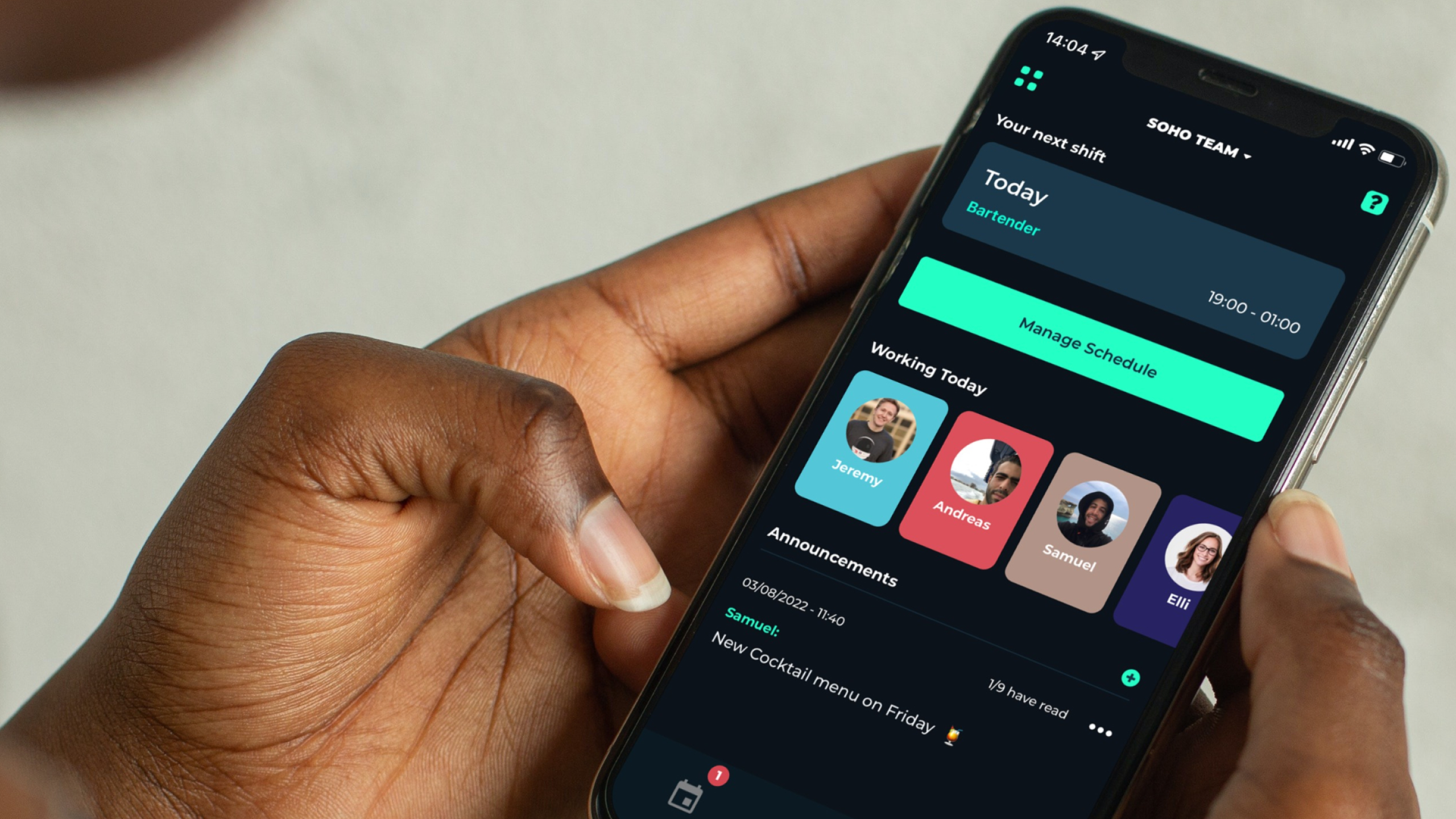Success in Food Industry: The Power of Team Management Tools

The success of any company is directly proportional to the quality of its teams' management, which is why team management tools are becoming an ever more critical component of the modern workplace.
Tools for managing teams make it possible for groups of people to work together more effectively and cooperatively. These tools can also help streamline processes, boost productivity, and improve communication.
Especially now, with the rise of technology, we see a broader growth in team management tools, which are expected to dominate whether there are large groups of employees or employees with non-fixed hours and fixed shifts. Therefore, we believe this is one of the primary reasons these particular tools are gaining so much popularity among restaurants and the food industry.
The following section will discuss the significance of team management tools and the myths surrounding their use and effectiveness. In addition, we will gain additional knowledge regarding Blend and the positive impact it has on businesses.
Misconceptions and myths about team management software

The belief that tools for managing teams are too complicated is widespread. While some tools have a steeper learning curve than others, most modern team management software is built with accessibility and simplicity in mind. In addition, many tools provide tutorials, demo videos, and customer support to aid new users in making the most of their new tool's capabilities.
It's also widely believed that small teams do not need formal project management software. Team management tools are helpful for groups of any size, though larger businesses may have more complex collaboration needs and thus stand to gain from more sophisticated options. Tools that aid in keeping track of tasks and deadlines and facilitating open communication between team members are helpful for businesses of any size, including startups.
Another common misconception is that smaller businesses can't afford to invest in team management software. Some tools have a higher price tag than others, but many low-cost alternatives still provide all the necessary features and functionality. In addition, many team management tools offer different pricing tiers depending on the number of people in each team and the specific features they require.
Ultimately, tools for managing teams aim to improve productivity in any organization, whether big or small. Teams can improve productivity and outcomes by using these tools to streamline communication, track progress, and stay on top of deadlines and tasks. If you're still on the fence about whether or not team management software would be helpful for your organization, you might want to reconsider your previous assumptions and give it a shot.
However, the misconceptions above do not hold water and should not prevent a business from implementing a team management system. Tools for managing teams are designed to increase output in companies of any size. By using these resources, teams can better coordinate their efforts, monitor their progress, and complete their work on time and within budget.
Most software for managing groups of people is designed with user-friendliness in mind. Even someone with limited technical knowledge can benefit from the team management features. In addition, these specialized resources are essential for any enterprise with a sizable workforce, as they simplify polling and the assignment of responsibilities across shifts and departments. In other words, it's necessary for groups of 5 and 500. However, you can likely find cost-effective bundles for any business, so the specialized tools are not as prohibitive as the general public might believe.
Take Blend as an example; It is free for businesses with up to five employees, optimizing workflows, staff management, and schedules for free. While costs for the remaining demographics rise gradually, there are no sudden jumps, and no businesses find the overall mixture prohibitively expensive.
Benefits of team management tools
Firstly, team management tools can also be named task and project management tools as they also manage those options.
A. Enhanced communication and collaboration
Live in-app chats, in groups or individually, are a feature of some team management tools. So either the manager can broadcast a message to all employees or an individual employee, or employees can talk to each other. This adds another layer of dependability, and problems can be instantly fixed within the app. As a result, the specially configured chat is used only for discussing and resolving urgent work-related issues, while off-topic conversations occur elsewhere.
Team collaboration is improved, and communication is enhanced toward this communication.
B. On-time project tracking and monitoring
Modern businesses should implement real-time project tracking and monitoring with team management tools to ensure projects are completed on time, within budget, and to the desired quality. These resources offer a consolidated environment for managers to track the status of their projects and spot problems before they escalate.
Tools for managing teams typically also include the capability to monitor ongoing projects in real time. These resources allow project managers to monitor the progress of individual tasks and the amount of time spent on them. They can see the project's development and make course corrections to keep things on track.
C. Enhanced productivity and efficiency
Businesses use team management software to facilitate better communication and cooperation among employees and between departments. As a result, companies can improve employee performance and overall success by implementing these tools, leading to greater operational consistency and accuracy.
Businesses can allocate their limited resources better by keeping better tabs on tasks and projects.
D. Customizable reporting and analytics
Using task management software can assist companies in project progress since the software provides reports and analytics regarding the company's performance during the week. For example, all the scheduled tasks appeared, and all the analytics toward those can be demonstrated. This can also help managers create the following employee schedules and assign tasks more accurately.
E. Centralized task management
Many businesses use team management software as a project management tool. As a result of using this tool, companies can establish clear lines of authority and accountability among employees, know precisely who is in charge of what, and monitor progress toward goals. This means no work will be overlooked, and no shifts will have to be completed with fewer employees.
Blend is the best employee scheduling software for your business because it combines all the above features and is tailored specifically for the food service industry.

What is Blend, and why is it the best team management software?
Because of its tailored design, Blend is the best option for managing teams in the food industry. The app profoundly understands the issues specific to the food industry and provides specialized solutions to help owners and managers run a tight ship.
Blend has many helpful tools that make organizing time and communicating with the team easier since every team member can access this. Managers can save much time with the app's automated scheduling feature, which creates schedules based on the team's availability and preferences.
With the shift-swapping function, employees can easily switch shifts, cutting down on the need for HR to make adjustments by hand. Everyone is on the same page regarding time off requests because they can be submitted and approved within the app. At the same time, managers can track project progress and improve cooperation.
Blend also offers information and analysis that can be used to make better managerial decisions for every team. Key metrics like employee performance can be monitored and adjusted with the help of the app's reporting and analytics features.
Managers and team members will appreciate Blend's straightforward interface and well-thought-out layout. In addition, the app is accessible from various platforms, including tablets and mobile phones.
Meanwhile, clock-in and clock-out functionality is planned for inclusion in the app soon, providing greater visibility into when employees arrive and depart from work for more accurate scheduling and budgeting of overtime. As a result, managers will have a crystal-clear picture of how many people can work in the business, how many are ultimately the correct number, etc., and time tracking will be improved even further.
Blend is one of the best team management apps for your restaurant, and you'll see why it's so important after you use it to make your first schedule. In addition, anyone can use Blend, with all its features and capabilities, for free, for teams of up to five people. Meanwhile, everyone can test out the app for no cost for two weeks.
In today's world, running a business with a sizable staff who don't work set shifts or hours without a dedicated team management system is impossible. If you're in the food industry and want a team management tool that excels, look no further than Blend.
Using Blend, you can shift planning and scheduling, boost team communication and collaboration, and make better data-driven decisions about managing your staff. Take advantage of this powerful app to its fullest by avoiding common pitfalls and keeping up with the latest features and updates. This will allow you to manage your team better.
